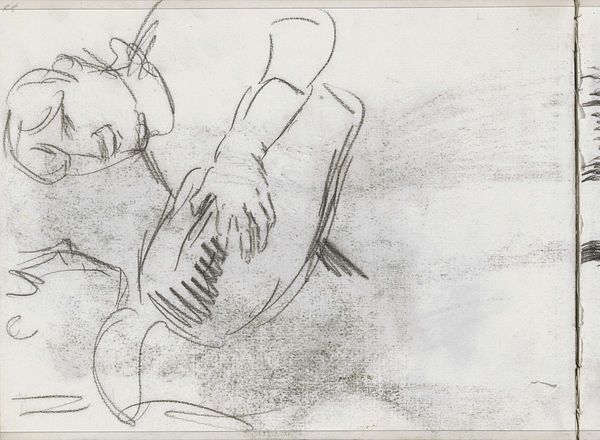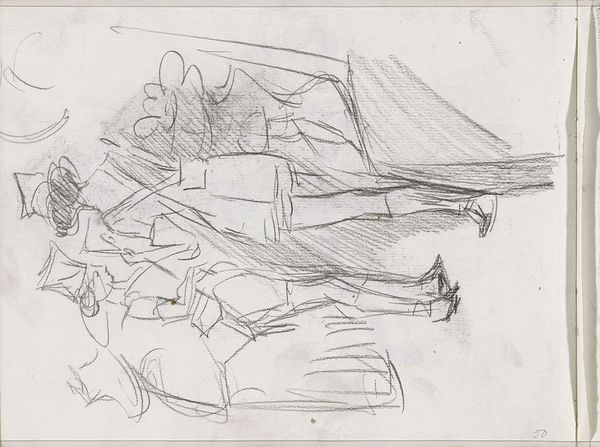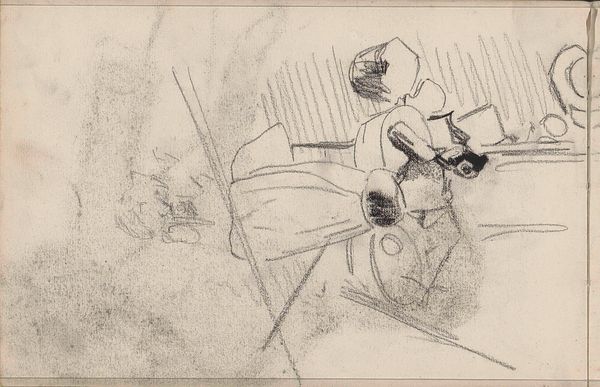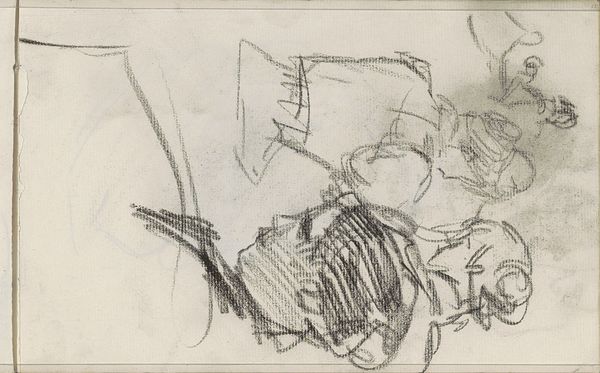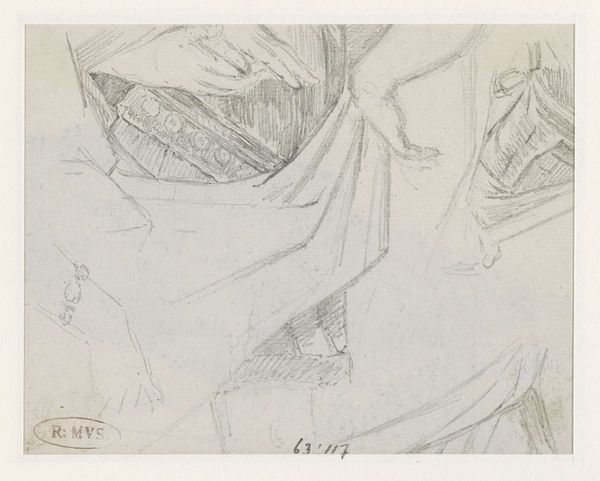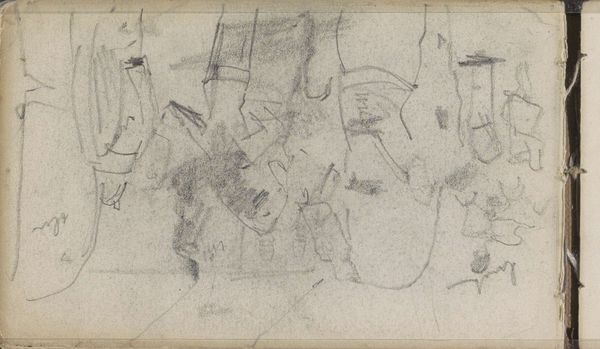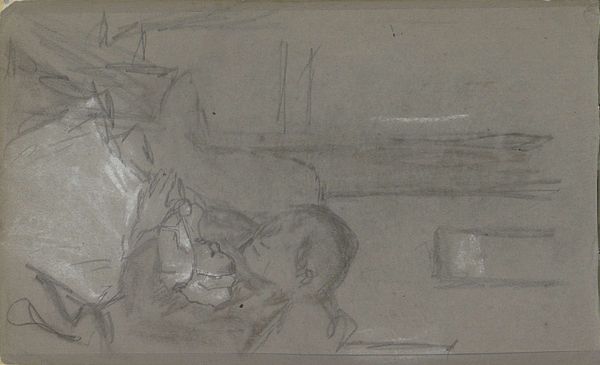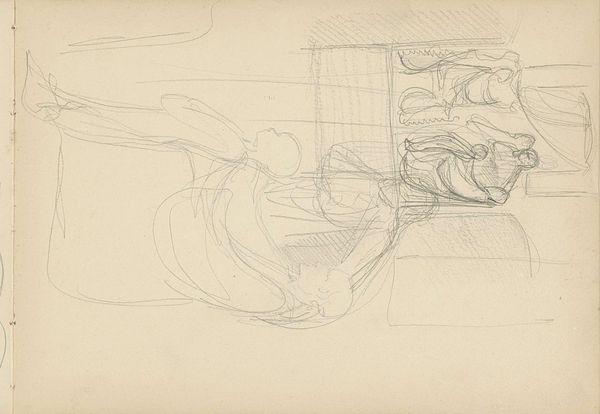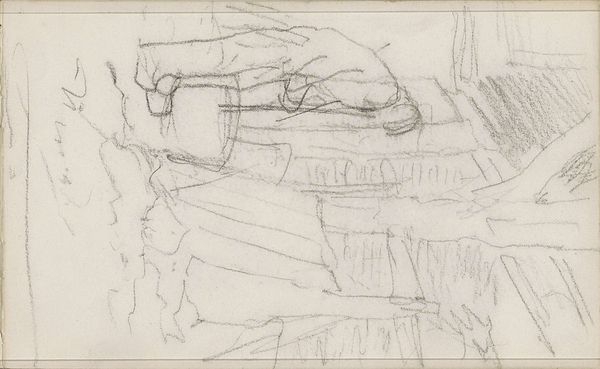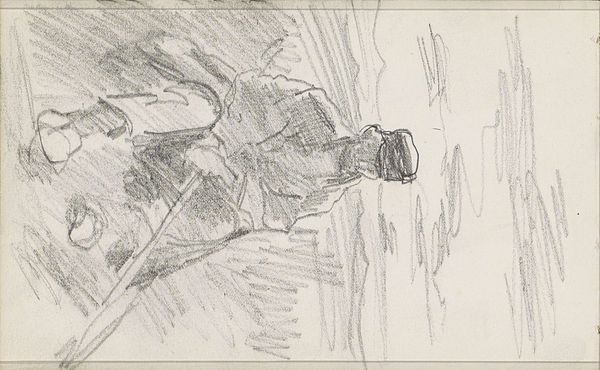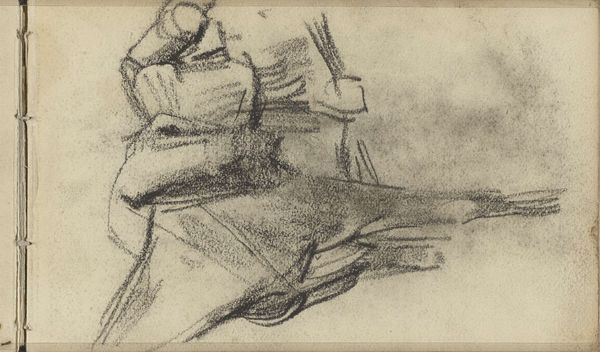
Figuren die op tafels uitgestalde objecten bestuderen c. 1895 - 1900
0:00
0:00
careladolphlioncachet
Rijksmuseum
drawing, pencil, graphite
#
drawing
#
pencil sketch
#
figuration
#
pencil
#
graphite
#
sketchbook drawing
Copyright: Rijks Museum: Open Domain
Curator: There’s almost a dreamlike quality to this piece. The ethereal grey washes over the page, rendering a series of rather enigmatic forms. Editor: Yes, a liminal space between the conscious and unconscious. This drawing, made with pencil and graphite, is titled "Figuren die op tafels uitgestalde objecten bestuderen," which translates to "Figures Studying Objects Displayed on Tables.” It was created by Carel Adolph Lion Cachet around 1895 to 1900 and currently resides here at the Rijksmuseum. Curator: I find myself drawn to the hands in this sketch. The gesture and the weight with which they appear feel very potent. Consider how they convey focus, or curiosity perhaps. The table almost acts as a shared space of investigation, which makes the work feel all the more personal. Editor: I see that too. But how can we consider this encounter within a wider sociopolitical lens? Cachet's lifetime saw the rise of anthropology and a deep fascination with other cultures. There’s perhaps a post-colonial power dynamic at play. Are they scientists examining artifacts, removed from their place of origin and flattened as “curiosities"? What kind of power do they enact? Curator: A rather astute interpretation. The stark rendering definitely alludes to objectivity but doesn’t quite convince us of neutrality. It has that sketch-like, intimate style as you might see in the naturalist painters and writers who tried to uncover the hidden meanings in life by simply portraying what was already there. There is, nevertheless, a lingering emotional impact, it suggests a cultural narrative of human inquisitiveness—a human search for significance beyond oneself. Editor: The choice of graphite itself further feeds this idea. Pencil sketch mirrors fleeting thoughts, an exploratory mode, perhaps representative of this transformative epoch. So, are the human figures embodying objectivity or colonial objectification of non-Western people and cultural artefacts, what symbols or hints can the viewer glean about these figures or those being othered. Curator: Indeed. It appears these symbols could function on multiple registers simultaneously, each informed by historical context and subjective perception. I leave more curious about how cultural memory operates and influences the interpretation of visual arts. Editor: I'm interested to think about it as well in regards to ethical representation and cultural ownership in museum spaces even today. Thanks.
Comments
No comments
Be the first to comment and join the conversation on the ultimate creative platform.
